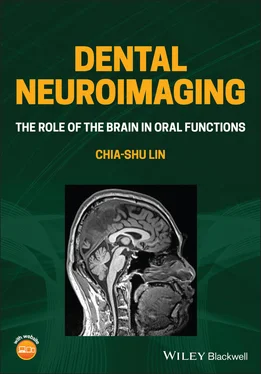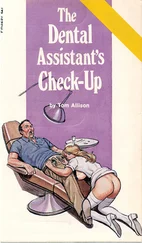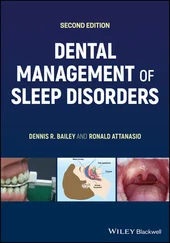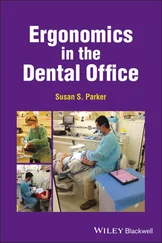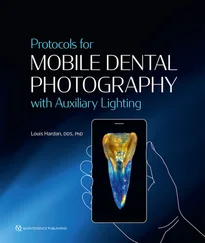Chia-shu Lin - Dental Neuroimaging
Здесь есть возможность читать онлайн «Chia-shu Lin - Dental Neuroimaging» — ознакомительный отрывок электронной книги совершенно бесплатно, а после прочтения отрывка купить полную версию. В некоторых случаях можно слушать аудио, скачать через торрент в формате fb2 и присутствует краткое содержание. Жанр: unrecognised, на английском языке. Описание произведения, (предисловие) а так же отзывы посетителей доступны на портале библиотеки ЛибКат.
- Название:Dental Neuroimaging
- Автор:
- Жанр:
- Год:неизвестен
- ISBN:нет данных
- Рейтинг книги:4 / 5. Голосов: 1
-
Избранное:Добавить в избранное
- Отзывы:
-
Ваша оценка:
- 80
- 1
- 2
- 3
- 4
- 5
Dental Neuroimaging: краткое содержание, описание и аннотация
Предлагаем к чтению аннотацию, описание, краткое содержание или предисловие (зависит от того, что написал сам автор книги «Dental Neuroimaging»). Если вы не нашли необходимую информацию о книге — напишите в комментариях, мы постараемся отыскать её.
Provides the latest neuroimaging-based evidence on the brain mechanisms of oral functions Dental Neuroimaging: The Role of the Brain in Oral Functions
Dental Neuroimaging: The Role of the Brain in Oral Functions
Dental Neuroimaging — читать онлайн ознакомительный отрывок
Ниже представлен текст книги, разбитый по страницам. Система сохранения места последней прочитанной страницы, позволяет с удобством читать онлайн бесплатно книгу «Dental Neuroimaging», без необходимости каждый раз заново искать на чём Вы остановились. Поставьте закладку, и сможете в любой момент перейти на страницу, на которой закончили чтение.
Интервал:
Закладка:
As an investigator who is lucky enough to witness the rise of this cross‐disciplinary field, I hope you enjoy this book and that you would appreciate how neuroimaging helps to unravel the mysterious connection between the brain and oral functions.
Introduction to Students and Instructors
This book consists of nine inter‐related chapters, which are organized into three parts. Part I Methods of Neuroimaging and Assessment of Oral Functions focuses on the methodological issues of the research of the association between the human brain and the stomatognathic functions, which covers an introduction to theoretical frameworks of the brain–stomatognathic connection ( Chapter 1), an introduction to neuroimaging methods, with a focus on magnetic resonance imaging ( Chapter 2), and an introduction to clinical assessments of oral functions ( Chapter 3).
Part II Neuroimaging Research of Brain Mechanisms of Oral Functions focuses on recent neuroimaging findings of oral sensory and motor functions, including the brain mechanisms of oral motor functions (e.g. mastication and swallowing) ( Chapter 4), oral sensory functions (e.g. somatosensation and gustation) ( Chapter 5) and orofacial pain and anxiety ( Chapter 6).
Finally, in Part III Translational Research of Dental Neuroimaging , the issues related to clinical applications of dental neuroimaging are reviewed, including the association between ageing and oral function ( Chapter 7), the brain mechanisms of the plasticity and adaptation of oral functions ( Chapter 8) and future directions about the translation application of neuroimaging in clinical management ( Chapter 9).
To readers who explore the field of brain imaging for the first time, key information regarding imaging and brain science can be found in the following supplementary materials.
From the Brain to Behaviour: These text boxes provide further information regarding the basic information in cognitive neuroscience.
From Research to Practice: These text boxes provide suggestions about how to properly interpret a neuroimaging finding and how the findings are related to clinical questions.
From Tools to Discovery: These online materials include video courses that demonstrate how to use basic research tools in neuroimaging.
Further correspondence from students, faculty and clinicians is welcome .
Please send the message to
Chia‐Shu Lin; e‐mail: winzlin@nycu.edu.tw.
Acknowledgements
Writing this book echoes my career as a neuroscientist and a dentist. I am grateful to Dr Shin‐Fang Yang and Dr. Mei‐Yu Chen, who showed me the road of being a scientist, Dr Irene Tracey and Dr Katja Wiech, who introduced functional neuroimaging to me during my DPhil study at the University of Oxford, and Dr Jen‐Chuen Hsieh, who inspired me with many insights on brain science during my postdoctoral research at Taipei Veterans General Hospital.
My exploration in dental neuroimaging, a new frontier in dentistry, is greatly benefited from the discussion with my colleagues from dental research: Dr Ming‐Lun Hsu, Dr Shyh‐Yuan Lee, Dr Kuo‐Wei Chang and Dr Ching‐Yi Wu, and colleagues in from brain research: Dr David Niddam and Dr Li‐Fen Chen, at National Yang Ming Chiao Tung University. The exploration cannot go further without the professional support from the 3T MRI Core Facility at National Yang Ming Chiao Tung University.
I am grateful to the managers and editors from Wiley Publishing: Associate Commissioning Editor Loan Nguyen, Managing Editor Tanya McMullin, Content Refinement Specialist Samras Johnson Vanathaiya, Copyeditors Aravind Kannankara and Rathi Aravind, and Editorial Publication Coordinator Susan Engelken. I have been much benefited from their professional assistance in preparing this book.
Finally, I am lucky to see things just because I stand on the shoulders of many giants – the researchers and clinicians who devote themselves in oral medicine and neuroscience. This book will just be empty without their pioneering works. They are the true explorers in this new frontier.
About the Companion Website
This book is accompanied by a companion website.

www.wiley.com/go/lin/dental‐neuroimaging
The companion website includes:
Video courses From Tools to Discovery
Lists of suggested readings for each chapter
Tables of updated information of neuroimaging literature associated with dentistry
1 Introduction to Neuroimaging and the Brain–Stomatognathic Axis
1.1 Why Do Dentists Need to Understand the Brain?
1.1.1 Introduction
If we look into any textbook of clinical dentistry – be it oral pathology, prosthodontics, periodontics or orthodontics – we may not feel surprised that the word ‘brain’ would appear just very few times in the whole book. Traditionally, dentists are trained as an expert in treating oral diseases and the topics related to the brain, and its relevant disorders are usually categorized as systemic issues. The dichotomy of ‘dental vs. systemic’ suggests that the brain and behaviour issues are beyond the spotlight of dentists. Such alienation is even pronounced if we hold a ‘pathological perspective’ on the association between the brain and dentistry: oral diseases are usually not the primary aetiology of neurological/mental disorders, cardiovascular, gastrointestinal or endocrinal diseases ( Figure 1.1). Therefore, there is no urgent need for dentists to learn the knowledge of the human brain.
However, the association between the brain and dentistry may show a different story if we adopt a ‘functional perspective’. Here, the brain, behaviour and oral health are directly linked if we consider that the brain plays a crucial role in maintaining oral functions, and the integrity of mental functions is critical to maintaining oral health. If we adopt the view that the brain and mental functions guided by the brain are essential to all human behaviours (e.g. from eating to toothbrushing), we may find that the brain has an essential and more dominant role in oral health ( Figure 1.1).
In the following sections, we elaborate on this functional perspective by revisiting three lines of evidence. Historically, we see that dentistry and brain science are the ‘old alliance’ for more than 100 years. Educationally, we discuss the role of neuroscience in the curriculum of dental education. Finally, the new engagement between dentistry and the brain via neuroimaging methods is highlighted.
1.1.2 The ‘Old Alliance’ Between Dentistry and Brain Science
The first evidence of the alliance between dentistry and brain science exists in an article published 130 years ago entitled Reflex Neurosis in Relation to Dental Pathology . The author mentioned that ‘… pain in a tooth is not indicative of the source of trouble, … The cause may be remote or in another tooth’ (Hayes 1889), a phenomenon now we may consider as heterotopic pain. Subsequently, the author put forward some insightful speculation on orofacial pain:

Figure 1.1 The association between the brain and the stomatognathic system. The traditional perspective highlights the brain as a ‘systemic factor’ associated with oral health, just like the factors related to other body systems. The functional perspective highlights that the brain and mental functions guided by the brain play an essential role in stomatognathic functions.
Читать дальшеИнтервал:
Закладка:
Похожие книги на «Dental Neuroimaging»
Представляем Вашему вниманию похожие книги на «Dental Neuroimaging» списком для выбора. Мы отобрали схожую по названию и смыслу литературу в надежде предоставить читателям больше вариантов отыскать новые, интересные, ещё непрочитанные произведения.
Обсуждение, отзывы о книге «Dental Neuroimaging» и просто собственные мнения читателей. Оставьте ваши комментарии, напишите, что Вы думаете о произведении, его смысле или главных героях. Укажите что конкретно понравилось, а что нет, и почему Вы так считаете.
